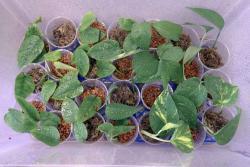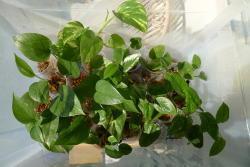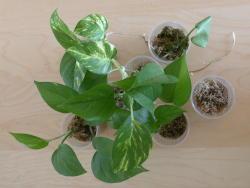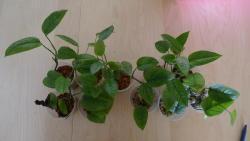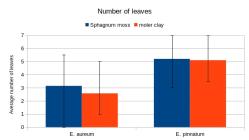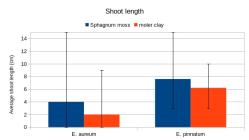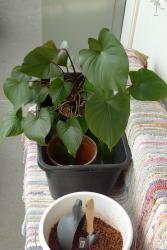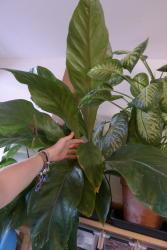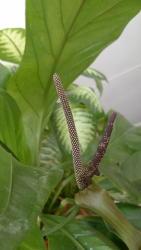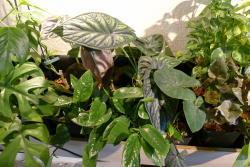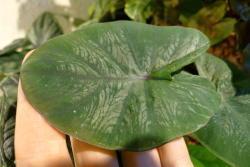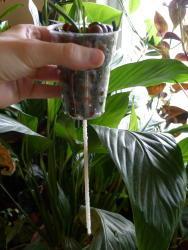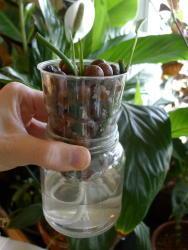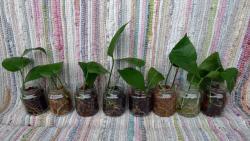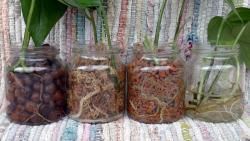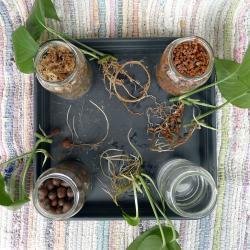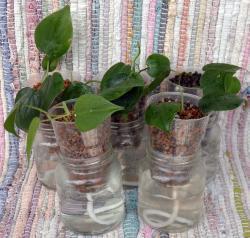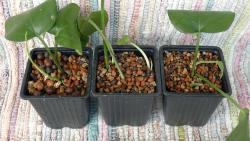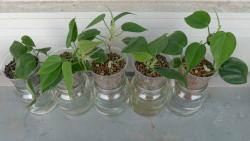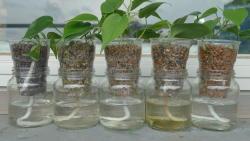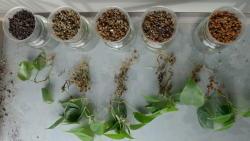I've been collecting aroids for less than a year, but with over 50 in my room already I was having trouble with under/overwatering. Some plants had much heavier soil than others and dried out much more slowly. So I went looking for a light potting mix, but I couldn't find a good mix in stores. I made a huge spreadsheet of recommended aroid potting mix recipes, trying to find the perfect mix. I couldn't find some ingredient locally, but in my search for alternatives I came across a bonsai forum where they recommended moler clay.
Moler clay (terramol) is a calcined clay product that is light and has a high moisture retention capacity. It's porous, drains well and allows oxygen to the roots even when saturated with water. Where I live it's sold as kitty litter and it's really cheap (don't put your plants in just any kitty litter - most types will kill your plants).
I repotted most of my aroids into moler clay. I removed just about all the soil off the roots - this was scary - and then put them in pots with just the moler clay (and a small layer of vulcanic rock at the bottom so the tiny medium didn't pour out the bottom holes). Afterwards I flushed the potted plants until the water coming out the bottom was no longer red from the clay dust. I was scared that taking all the soil off the roots would cause at least a few leaves to die off, but none of the plants showed any signs of stress and the drama queen Spathiphyllum didn't even droop its leaves. It's now two months later and all of them have continued growing like nothing happened. Yay!

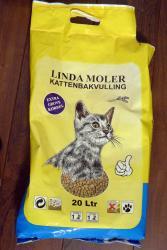


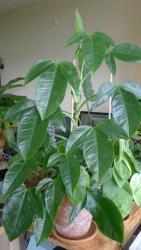
Pros of moler clay:
- Water as often as you like
- Root aeration even when wet
- Some wicking action - you can water from below by keeping the bottom of the pot in water
- Changes colour when it dries out, so you can see when you need to water again
- Increases local humidity
- No more fungus gnats
- Cheap
Cons of moler clay:
- Made of specific Danish clay, so only available in Europe
- Mostly untested
- Low cation exchange capacity - it doesn't hold much fertiliser by itself so you need to always add a little bit to your water
- Always moist, so it's prone to algae and may cause rot if leaves touch the medium
- If you don't mix it with other ingredients, it dries out completely in 3-7 days
Anyway, on to the experiment part. So far all the aroids I put in moler clay already had roots. I tried some cuttings that had rooted in either water or Sphagnum moss, and they did fine after being transferred to moler clay. But I haven't tried putting cuttings without roots into the medium directly. I took 22 pothos cuttings (14x Epipremnum aureum, 12x Epipremnum pinnatum). I put half in Sphagnum moss and half in moler clay, all in clear cups with a drainage hole at the bottom. You can see the difference in colour of the clay dry vs wet.
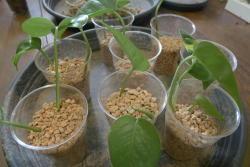
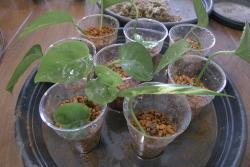
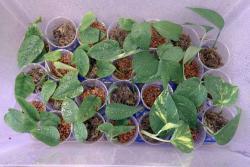
I'll update in a while to show the progress.








